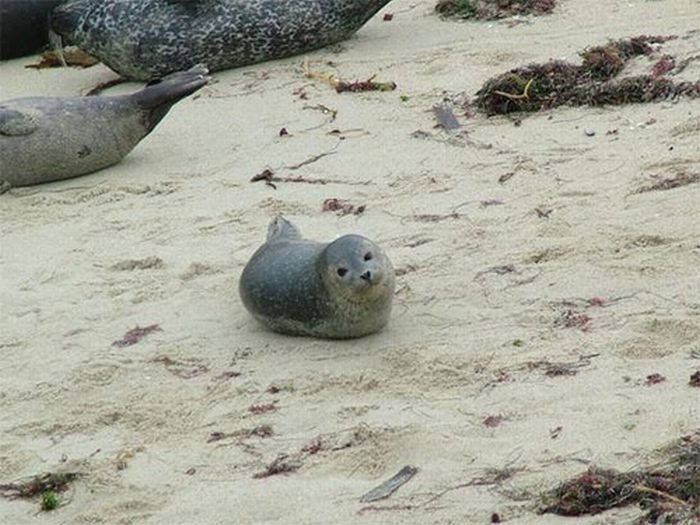|
|
Baby Seal
|
Reproduction
Males of some species, including Elephant seals, South American Sea Lions, and Northern Fur Seals) aggressively defend groups of specific females, referred to as harems. Males of other species, including most sea lions and Brown Fur Seals) defend territories on reproductive rookeries while females move freely between them. Occasionally violent competition for females or territories is an integral part of male breeding strategy among most pinnipeds. Otariids, which are generally more land-adapted, form major aggregations in the summer months on beaches or rocky outcrops. Consequently, their reproductive behavior is easier to observe and relatively well-studied. Walruses and many phocids, on the other hand, form smaller aggregations, often in remote locations or on ice, and copulate in the water. Their reproductive behavior is less well known.
Females have a postpartum oestrus that allows them to mate soon after giving birth. Delayed embryo implantation (embryonic diapause) obviates the need to come ashore (haul-out) twice, once to give birth and again to mate. After giving birth, mothers suckle their young for a variable period. Phocid lactation varies from 4 to 50 days, whereas otarids lactate from 4 to 36 months. This reflects the fact that phocid feeding grounds tend to be far off-shore, so lactation is associated with maternal fasting. To compensate for the short lactation period, the fat content of phocid milk (45–60% fat) is higher than in any other marine mammal species. After lactation, most females migrate to feeding grounds for intensive foraging to recoup energy reserves. Otariid feeding grounds are generally closer to shore and mothers take foraging trips. Otariid milk fat content is lower than that of phocids, owing to the protracted lactation period (typically 25–50%). Protracted nursing also leads to the formation of social bonds.
After the female returns from her first feeding trip the most important thing for her is to find her own pup out of the mass of other pups that are not her own. Feeding a different mother's pup is a significant waste of energy, as milk production is a high parental cost. The seal overcomes this complication by voice recognition. The mother and pup must learn each other's voice in the first few days after the pup is born, before mom goes on her next hunt. On returning the mother seal calls out to her pup, causing the pup to call back. This enables the mother to be able to find her own pup and not waste any energy feeding and taking care of the wrong pup as this would only decrease her own fitness.
|
|









